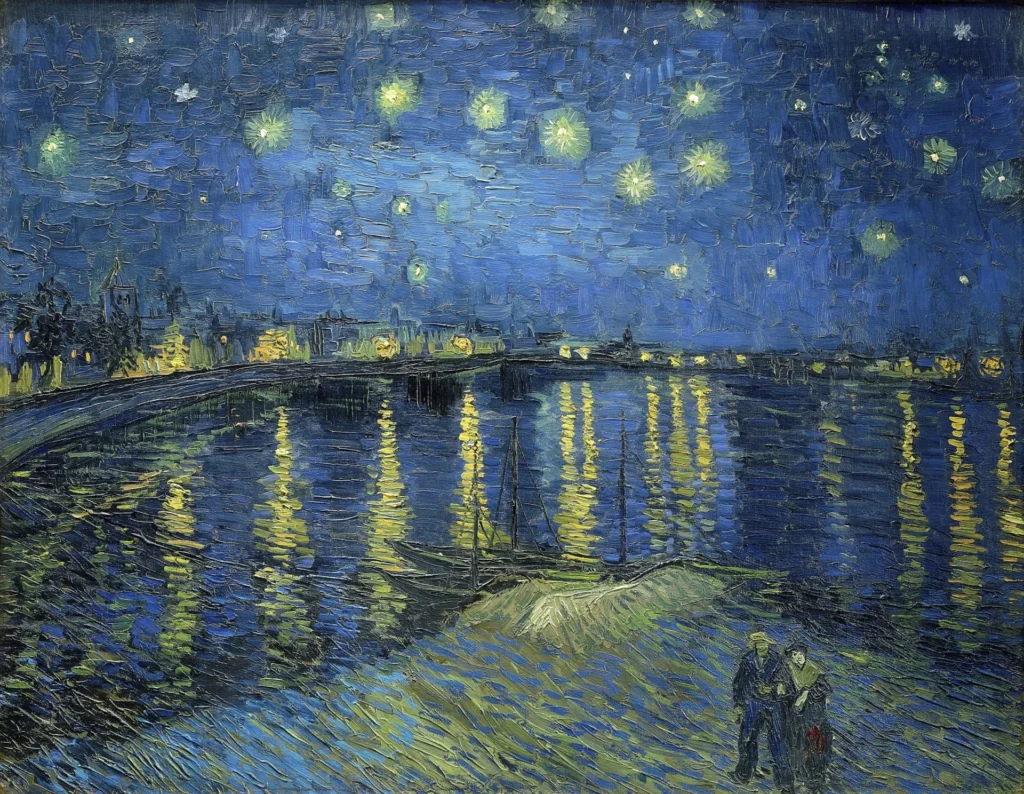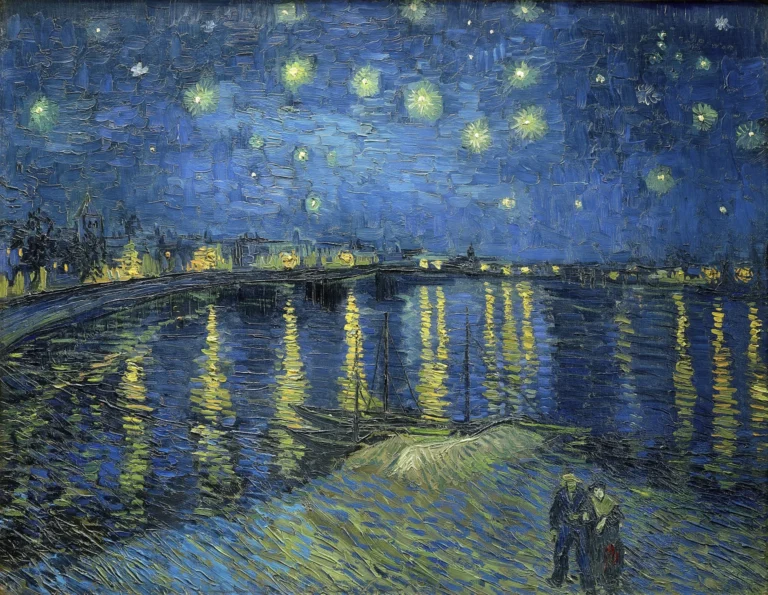Starry Night Over The Rhone (1888)
Vincent van Gogh's Starry Night Over the Rhone is celebrated for its stunning depiction of a moonlit night along the Rhône River. Created in September 1888, the painting immerses viewers in a tranquil riverscape illuminated by gas lights and a starry sky. Van Gogh's vibrant use of color and masterful rendering of light effects bring a sense of intimacy to the scene, which includes a romantic couple strolling along the bank. This work is an essential part of Van Gogh's exploration of night-time landscapes and foreshadows his later, more famous work, The Starry Night.
September 1888
About the Artwork
Starry Night Over the Rhone was created during an artistic blossoming for Vincent van Gogh, as he experienced a phase of relative happiness during his time in Arles. Inspired by a desire to capture the beauty of the night and the unique colors it presents, he worked en plein air, directly from nature. The scene features the calm waters of the Rhône reflecting the shimmering stars and gas lights, evoking a sense of peace and romance. The inclusion of the lovers in the foreground adds a narrative depth, suggesting themes of love and connection. This painting not only exhibits Van Gogh’s technical skill but also his ability to imbue his landscapes with emotion and atmosphere, creating a bridge to his later works.
Did You Know
Liked what you see? Add it to your collection.
Enjoyed reading? Share it.
... continued
Location and Inspiration
The painting was created on the bank of the Rhône River, just a short walk from Van Gogh's residence, the Yellow House on Place Lamartine in Arles.
Subject Matter
The painting depicts a night scene with a view from the quay on the east side of the Rhône, looking towards the western shore. It includes the towers of Saint-Julien and Saint-Trophime, and the iron bridge connecting Arles to the suburb of Trinquetaille. In the foreground, two lovers are shown strolling along the riverbank.
Color and Light
Van Gogh was deeply interested in capturing the colors and light effects of the night. The painting features a vibrant night sky with stars, gas lighting from the town, and reflections in the water. The colors used include aquamarine for the sky, royal blue for the water, mauve for the ground, and yellow and russet gold for the gaslights and their reflections.
Artistic Significance
This work is part of Van Gogh's series of night paintings, which also includes










